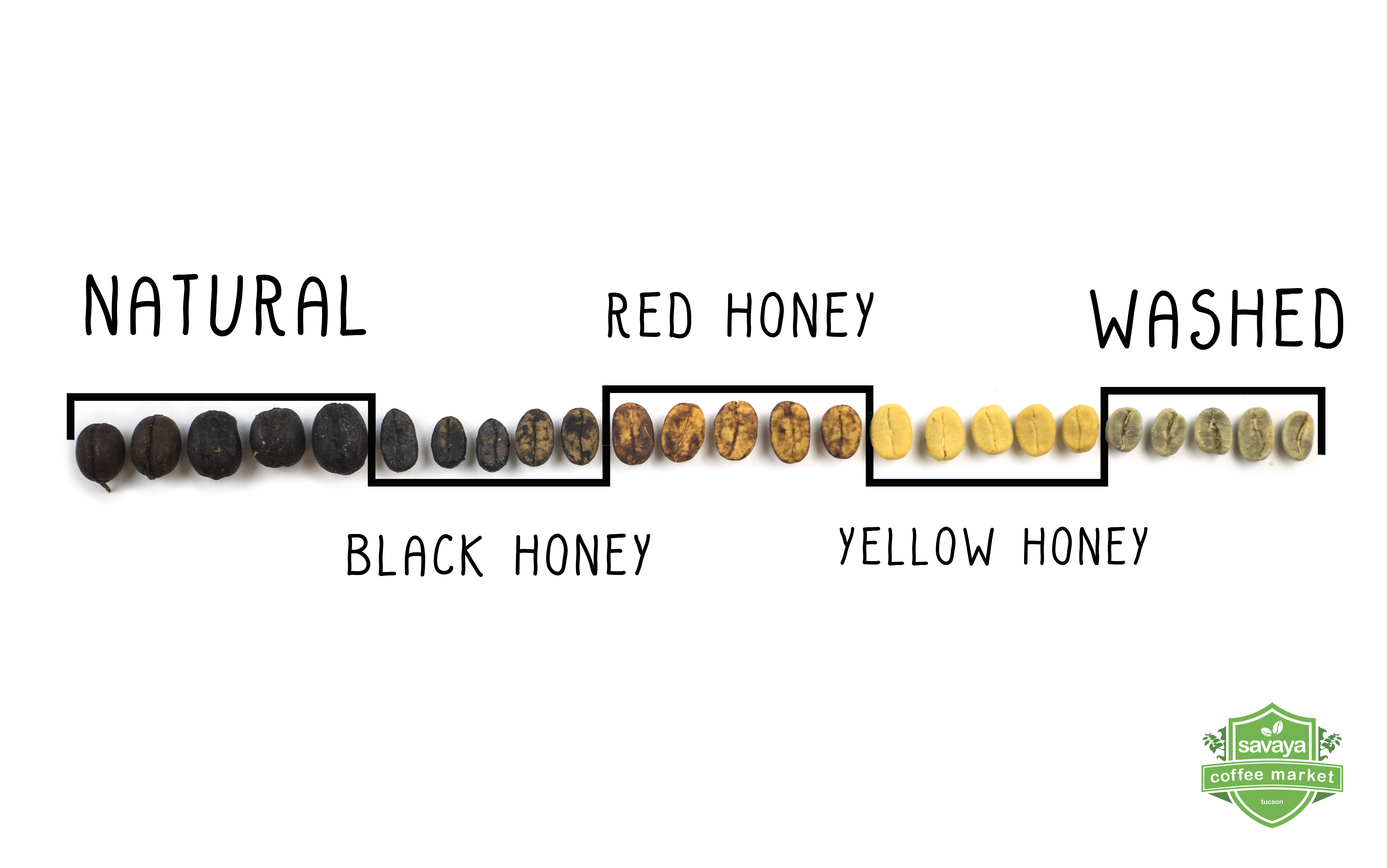
Ever wonder how coffee cherries become the delicious cup of coffee you drink every morning? There’s a lot of science and ingenuity that goes into it. Between the time a coffee cherry is picked and makes it to your cup, it undergoes one of four main processing types.
These processing techniques – fully washed, natural, honey, and wet hulled – have an impact on the taste and quality of the final product. While no two coffee harvests are the same, there are some general characteristics of each process that can help you predict what to expect out of your coffee of choice. Here’s a quick run-down:
Washed Process – all the pulp and mucilage around the bean is removed before drying, allowing for a brighter and more complex cup. Coffee that is washed processed is often more nuanced, allows for more subtle flavors, and is more citrusy and tangy than a natural processed bean. And, as a result, has a lighter body (how it feels in your mouth) to it.
Natural Process – the opposite of washed processed; coffee beans are dried with the bean in the cherry. The coffee that results maintains a similar flavor to the cherry and the region of origin. It has more of a body than washed processed coffee, more of a red fruit and rounder taste, and also more acidity.
Honey Process – Some of the mucilage is kept on the bean, creating a unique tasting profile from a washed process (all pulp and mucilage off the bean while drying) and natural process (all pulp and mucilage on the bean while drying). The resulting coffee can often be the best of both worlds, with characteristic of natural processed, and the delicacy and complexity of washed processes.
Wet Hulled – in this processing method, mucilage is removed first, and parchment is left on the bean until a later time. A blue hue to the bean results. The result is a reduction in acidity, and an increase in the body, or mouthfeel, of the coffee. This is a process done mostly with Indonesian coffees.

Recent Comments